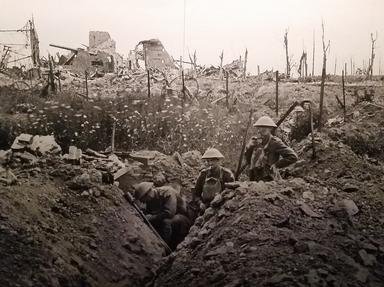Quiz Answer Key and Fun Facts
1. When did the Canadian Prime Minister declare war on Germany and Austria-Hungary?
2. Like many people in Europe, a lot of Canadians were originally excited about the idea of war. Canada had no conscript army in 1914, but thousands of young men volunteered before the end of August, confident, like their British counterparts, that they'd be 'home by Christmas'. Which of these groups were, on the whole, *not* enthusiastic about the war effort?
3. During which battle did Lt. John McCrae write his famous poem "In Flanders Field"?
4. When a tragic accident happened on the home front, many people were quick to call it to German sabotage, saying "the Hun hath done this!" What happened on 3 February 1916?
5. To say that the Battle of the Somme, in the summer of 1916, did not go well for the Allies would be an understatement. Which of these divisions or regions of Canada still remembers July 1st as a dark and mournful day?
6. Which of these distinctions can be attributed to Billy Bishop?
7. The Battle of Vimy Ridge (1917), a proud moment in the history of Canadian heritage, was part of which larger-scale Allied offensive?
8. With war-weariness increasing and the numbers of volunteers dropping in 1917, Canadian Prime Minister Robert Borden was struggling with the idea of introducing conscription for Canadian men. Several segments of the population were vehemently against the idea. How did Borden succeed in winning the federal election of December 1917, even though he had already introduced the Military Service Act and it had passed?
9. Which of these Canadians was thought to be the person who shot down the Red Baron?
10. Was Canada represented at the Paris Peace Conference?
Source: Author
guitargoddess
This quiz was reviewed by FunTrivia editor
bloomsby before going online.
Any errors found in FunTrivia content are routinely corrected through our feedback system.

